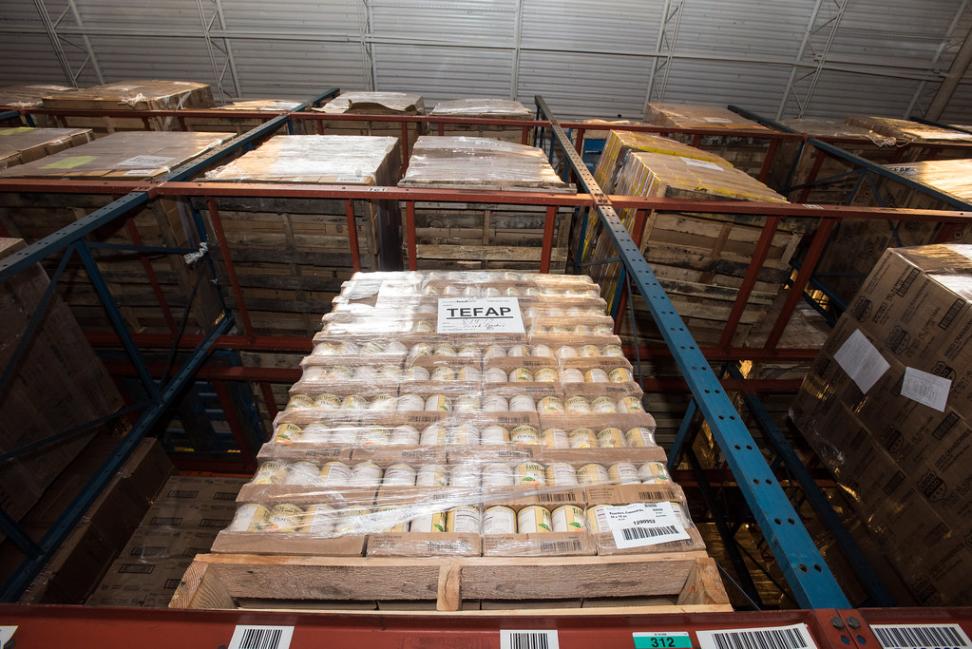In the frozen foods distribution industry, food safety practices are paramount. The challenges of handling, storing, and transporting these temperature-sensitive products demand stringent safety protocols to ensure quality and consumer health. Maintaining optimal conditions throughout distribution is critical to prevent spoilage and contamination. This article delves into the core aspects of food safety in frozen foods distribution, including proper handling, effective storage, accurate labeling, and the prevention of cross-contamination. By adhering to these practices, distributors can uphold the highest standards of food safety, ensuring their products are not only delicious but also safe and reliable.
Proper Handling of Frozen Foods
Proper handling of frozen foods is crucial in maintaining their quality and safety. Every step must be carefully managed from the moment a shipment is received to the point it reaches the consumer.
Key practices include:
- Receiving Shipments: On receiving frozen food shipments, inspecting the packaging for any signs of damage or tampering is essential. Products should be quickly moved to the appropriate storage to minimize time spent at non-optimal temperatures.
- Loading and Unloading Procedures: The loading and unloading process should be swift to prevent thawing. Using equipment that minimizes physical handling reduces the risk of package damage and subsequent exposure to contaminants.
- Managing Transit Conditions: Maintaining a consistent, cold environment is vital during transit. This includes ensuring that refrigeration units in transport vehicles function correctly and monitoring the temperature throughout the journey.
- Minimizing Temperature Fluctuations: Frozen foods should be kept at a constant temperature to prevent thawing and refreezing, which can degrade product quality and safety. Strategies include minimizing the opening of freezer doors and using insulated coverings during transport.
- Training for Handlers: All personnel involved in the handling of frozen foods should be adequately trained. They should understand the importance of maintaining the cold chain and be aware of the correct procedures to follow in case of equipment failure or other emergencies.
By focusing on these aspects of handling, distributors can significantly reduce the risk of food safety issues, ensuring that the products they deliver are of the highest quality and safe for consumption.
Effective Storage Solutions
Storage is a critical component in ensuring the safety of frozen foods. Proper storage solutions not only maintain the quality of the products but also prevent the growth of pathogens and spoilage.
Essential elements of effective storage include:
- Temperature Control: The most critical aspect of frozen food storage is maintaining the correct temperature, typically at or below 0°F (-18°C). Consistent temperature prevents the growth of bacteria and maintains food quality.
- Humidity Management: Managing humidity levels in storage areas is essential to prevent freezer burn and dehydration of products. This involves using dehumidifiers or maintaining proper air circulation within storage facilities.
- Organized Storage Practices: An organized storage system helps maintain product quality and facilitates efficient retrieval. This includes clearly labeling and dating products and following a first-in, first-out (FIFO) system to ensure older products are used first.
- Technology for Monitoring Conditions: Utilizing advanced technology, such as temperature and humidity sensors, ensures that storage conditions are constantly monitored. Alerts can be set up to notify staff of any deviations from the desired conditions, allowing for quick corrective actions.
- Regular Inspections and Maintenance: Routine inspections and maintenance of storage facilities and equipment are crucial to ensure they function optimally and prevent potential food safety issues.
Accurate and Informative Labeling
Labeling plays a significant role in food safety in the frozen foods distribution industry. Proper labeling provides essential information to consumers and helps maintain safety standards during distribution.
Key components of effective labeling include:
- Ingredient Lists and Allergen Information: Labels should clearly list all ingredients and highlight any common allergens. This is crucial for consumer safety, especially for those with food allergies.
- Expiration Dates: Accurate labeling of expiration dates helps ensure that consumers receive products that are safe to consume. It also aids distributors and retailers in managing inventory effectively.
- Storage Instructions: Including proper storage instructions on labels is essential. This ensures that consumers know how to maintain the quality and safety of the product after purchase.
- Traceability Information: Providing information about the product’s origin, processing, and distribution journey enhances traceability. This is important for quality control and essential in the event of a product recall.
Accurate and informative labeling not only enhances food safety but also builds consumer trust in the brand. It ensures that all parties involved in the distribution and consumption of frozen foods are well-informed about the products.
Maintaining Hygiene and Preventing Cross-Contamination
Maintaining high standards of hygiene is essential in the distribution of frozen foods. This practice prevents cross-contamination, a major concern in the food industry, which can lead to foodborne illnesses. Effective hygiene and contamination prevention strategies include:
- Regular Cleaning and Sanitization: Facilities and vehicles used for storing and transporting frozen foods must be cleaned and sanitized regularly. This includes surfaces that come into direct contact with food products, as well as handling equipment.
- Employee Hygiene Protocols: Personnel involved in the handling and distribution of frozen foods should follow strict hygiene protocols. This includes regular hand washing, using protective clothing, and adhering to policies that prevent contamination, such as not working when ill.
- Preventing Cross-Contamination: Measures should be in place to prevent cross-contamination between different types of food products, especially between raw and cooked foods. This can involve separate storage areas, dedicated equipment for different food types, and clear labeling.
- Pest Control Measures: Implementing effective pest control measures is critical in maintaining hygiene standards. Regular inspections and treatments can prevent infestations that could compromise food safety.
Implementing and Monitoring Food Safety Practices
To ensure the highest standards of food safety in frozen foods distribution, it is crucial to not only implement best practices but also to monitor their effectiveness. This involves:
Regular Training for Staff: Continual education and training on food safety practices for employees are vital. This keeps the team updated on the latest standards and reinforces the importance of their role in maintaining food safety.
Conducting Periodic Audits: Regular audits of facilities and processes help identify areas for improvement and ensure compliance with food safety standards. These audits can be internal or conducted by external bodies.
Feedback and Continuous Improvement: Establishing a system for feedback from employees and customers can provide valuable insights into the effectiveness of food safety practices. Continuous improvement should be a goal, with practices regularly reviewed and updated as necessary.
By implementing these practices and ensuring continuous monitoring and improvement, frozen food distributors can maintain the highest standards of food safety, contributing to the well-being of consumers and the success of their businesses.
Conclusion
The distribution of frozen foods is a sector where safety cannot be compromised. Enhancing food safety practices is not just a regulatory requirement but a commitment to consumer health and quality assurance. Distributors can ensure that their products meet the highest safety standards by implementing robust strategies for handling, storage, labeling, hygiene, and ongoing monitoring.
Proper handling and storage maintain the integrity of the products, accurate labeling provides essential information to consumers and helps manage inventory, and maintaining hygiene and preventing cross-contamination are key to avoiding foodborne illnesses. Regular staff training and periodic audits are crucial for consistently upholding these standards.
In a market that is increasingly health-conscious and quality-driven, the importance of stringent food safety practices cannot be overstated. Distributors who prioritize these practices are not only complying with industry standards but also building trust with their customers. This commitment to food safety is what sets successful distributors apart in the competitive landscape of frozen food distribution.
For those looking to excel in this industry, embracing and continuously enhancing food safety practices is a sure path to success. Visit Food Shipping Experts for more insights and assistance in implementing top-tier food safety strategies in your frozen foods distribution business. Let us help you ensure that your products are not only delicious but also safe and of the highest quality.




